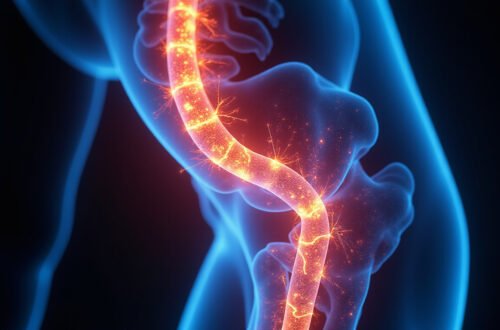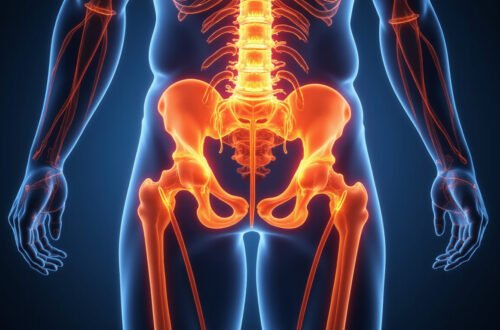Sciatica is a common condition that affects millions of people worldwide, causing sharp, shooting pain along the sciatic nerve — a large nerve running from the lower back down through the legs. If you are suffering from sciatica, understanding sciatica self care techniques is crucial for managing the pain and improving mobility. This article will guide you through the most effective strategies to relieve sciatica pain quickly and regain your quality of life.
Understanding Sciatica and Its Causes
Before diving into sciatica self care tips, it’s important to understand what causes this condition. Sciatica occurs when the sciatic nerve is irritated or compressed, usually due to:
- Herniated or bulging discs in the spine
- Spinal stenosis (narrowing of the spinal canal)
- Piriformis syndrome (tightness or spasms in the piriformis muscle)
- Degenerative disc disease
- Injury or trauma to the lower back
Symptoms typically include pain radiating from the lower back or buttocks down the leg, numbness, tingling, and muscle weakness. Identifying the root cause can help tailor your self-care routine effectively.
Top Sciatica Self Care Tips for Fast Pain Relief
Sciatica self care involves a combination of lifestyle changes, exercises, and pain management techniques you can safely perform at home. Here’s a breakdown of the most effective strategies:
1. Gentle Stretching Exercises
Stretching helps to alleviate pressure on the sciatic nerve by loosening tight muscles, especially in the lower back, hips, and hamstrings. Consider incorporating these stretches into your daily routine:
- Piriformis Stretch: Lie on your back with both knees bent. Cross the affected leg over the other, placing the ankle on the opposite knee. Gently pull the lower knee toward your chest until a stretch is felt in the buttock. Hold for 30 seconds.
- Seated Hamstring Stretch: Sit on the floor with one leg extended and the other bent so that the sole of the foot touches the inner thigh. Reach toward the toes of the extended leg, keeping your back straight. Hold for 20-30 seconds.
- Knee-to-Chest Stretch: Lie on your back and pull one knee toward your chest, holding it with both hands. Keep the other leg bent or extended straight on the floor. Hold for 20-30 seconds.
2. Maintain Good Posture
Slouching or sitting for prolonged periods can intensify sciatica symptoms by putting added pressure on the lower spine. Use these tips to improve posture daily:
- Sit with your back supported and feet flat on the floor.
- Use ergonomic chairs or lumbar supports when working at a desk.
- Avoid crossing your legs or leaning forward for long periods.
- Stand and walk around every 30-60 minutes during prolonged sitting.
3. Apply Heat and Cold Therapy
Alternating heat and cold packs is a proven way to reduce inflammation and muscle spasms associated with sciatica. Use this regimen:
- Cold Therapy: Apply an ice pack wrapped in a cloth to the painful area for 15-20 minutes every 2-3 hours during the first 48 hours of pain onset to reduce inflammation.
- Heat Therapy: After the initial inflammation subsides, use a heating pad or warm compress for 20 minutes to relax muscles and improve blood flow.
4. Stay Active with Low-Impact Exercises
Although resting may be tempting, complete inactivity can worsen symptoms by weakening muscles supporting the spine. Engage in low-impact activities such as:
- Walking
- Swimming
- Stationary cycling
These exercises improve circulation and strengthen core muscles, which play a vital role in spinal support.

5. Use Over-the-Counter Pain Relievers Wisely
Nonsteroidal anti-inflammatory drugs (NSAIDs) like ibuprofen or naproxen can provide temporary relief from sciatica pain and inflammation. However, they should be used as directed and not relied on solely for long-term pain management.
6. Practice Mindfulness and Relaxation Techniques
Stress can intensify pain perception. Techniques like deep breathing, meditation, and yoga can help you manage pain and reduce muscle tension.
A Quick Guide to Sciatica Self Care: Summary List
- Perform gentle stretching exercises daily to relieve nerve pressure.
- Maintain good posture especially when sitting or standing for long periods.
- Apply cold packs initially, then alternate with heat therapy to ease inflammation and muscle spasms.
- Engage in low-impact exercises to keep muscles strong and improve flexibility.
- Use over-the-counter anti-inflammatory medications cautiously to manage pain.
- Incorporate mindfulness or relaxation practices to reduce stress-induced pain.
When to Seek Professional Help
While sciatica self care can be effective, it’s important to recognize when medical attention is necessary. Consult a healthcare professional if you experience:
- Severe or worsening pain that doesn’t improve with self-care.
- Loss of bladder or bowel control.
- Significant weakness or numbness in your leg or foot.
- Pain following an injury or trauma.
Early intervention can prevent complications and improve long-term outcomes.
Frequently Asked Questions About Sciatica Self Care
Q1: How soon can sciatica self care reduce pain?
Sciatica self care methods like stretching and heat/cold therapy can start alleviating pain within a few days. However, consistency is key, and some cases may take several weeks to improve significantly.
Q2: Can I exercise with sciatica?
Yes, gentle, low-impact exercises such as walking, swimming, or stationary cycling are encouraged. Avoid high-impact or heavy lifting until your pain subsides.
Q3: Are there any natural remedies or supplements effective for sciatica?
While some people find relief with supplements such as turmeric or omega-3 fatty acids due to their anti-inflammatory properties, always consult with your healthcare provider before starting any supplements.
Trusted Sources for Sciatica Information
For more comprehensive guidance on sciatica, the Mayo Clinic offers an excellent resource outlining symptoms, causes, and treatments available: Mayo Clinic Sciatica Overview (source).
Take Control of Your Sciatica Pain Today
Living with sciatica pain can be challenging, but adopting effective sciatica self care methods empowers you to take control of your condition. Start by incorporating gentle stretches, maintaining good posture, and using heat or cold therapy at home. Stay active with low-impact exercises, manage stress, and use medications carefully. Remember, lasting relief often comes from a combination of these strategies — consistency is your best ally. If your pain persists or worsens despite self care, don’t hesitate to seek professional advice. Your journey to reduced pain and better mobility starts now!






